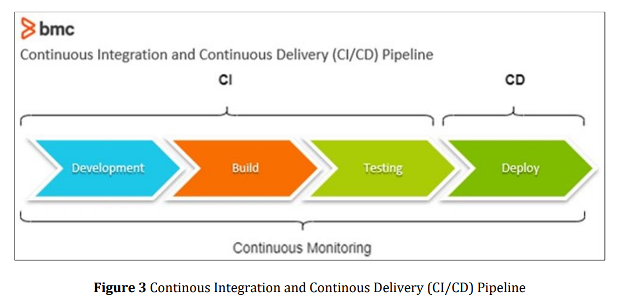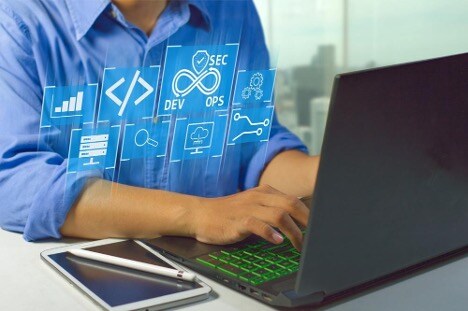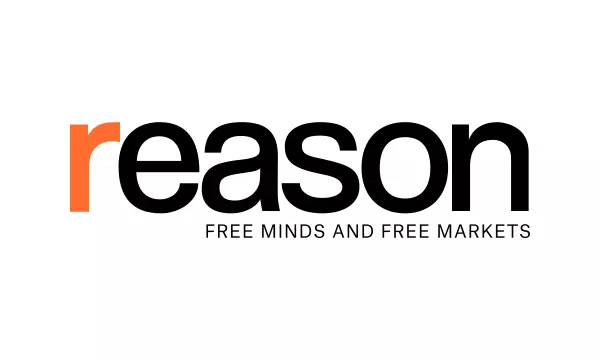Generative AI is transforming DevOps and DevSecOps, promising faster development, smarter automation, and proactive security. Over the years I've spent integrating AI into DevOps workflows across enterprises, the biggest mistake I’ve noticed is treating AI as a magic bullet—expecting it to replace human expertise rather than augment it. However, AI works best when it’s an intelligent collaborator, not a blind automation tool.
Speed without control is chaos. AI-generated code can introduce vulnerabilities, AI-driven CI/CD can deploy broken updates, and AI-enhanced security can flag too many false positives. If you’re not using AI with a strategy, you’re inviting risk, not efficiency.
Instead of applying AI indiscriminately, the most effective teams strategically integrate AI where it amplifies human expertise—code reviews, security checks, and predictive failure analysis. This approach ensures speed without compromising security and efficiency without losing control.
AI-Powered Code Generation and Optimization: Can AI Write Better Code Than Humans?
The ability of Generative AI to write, refactor, and optimize code has revolutionized how developers approach software development. Tools like GitHub Copilot, Amazon CodeWhisperer, and OpenAI Codex utilize advanced large-scale language models to autocomplete functions, improve code structure, and even preemptively detect vulnerabilities.
According to McKinsey’s study on developer productivity with generative AI, AI-assisted coding tools can decrease development time by 30–50% on repetitive tasks like code documentation, generation, and refactoring. This shows Generative AI's strength in simplifying low-complexity tasks, letting developers concentrate on complex problem-solving and architectural planning.
Image: McKinsey & Company
However, while AI-generated code improves speed, it’s important to note that it has limitations when addressing high-complexity tasks, where human expertise remains indispensable. From my experience, human oversight remains essential. AI often lacks contextual awareness, meaning it might suggest suboptimal or insecure implementations. For instance, AI tools might overlook critical considerations such as memory management or compliance with organizational security standards.
To maximize AI's benefits in code generation, it should act as a collaborator, not a replacement. In enterprise projects, human oversight during code reviews is essential to ensure AI outputs meet organizational and industry standards. This hybrid approach—as it leverages AI for efficiency while depending on human expertise for strategic oversight—ensures both speed and quality in software development.
Intelligent CI/CD Pipeline Automation: Reducing Deployment Failures
Continuous Integration and Continuous Deployment (CI/CD) form the core of DevOps. Automation powered by AI is improving these pipelines by anticipating failures, streamlining build processes, and executing automatic rollbacks when problems arise.
A study published by the International Journal of Science and Research Archive (IJSRA) highlights the growing importance of AI in CI/CD workflows. The study notes that AI models trained on historical deployment data can significantly enhance pipeline efficiency by:
- Identifying bottlenecks in build processes
- Predicting the likelihood of failure scenarios
- Automating the prioritization of critical test cases

Image: International Journal of Science and Research Archive
One of the most significant findings from the study is that AI-powered anomaly detection systems can preemptively address dependency conflicts and configuration errors. These capabilities reduce the manual workload for engineers while ensuring more stable and predictable releases.
However, AI should not be blindly trusted in deployment automation. While it can flag potential risks, human engineers must validate and approve critical rollbacks. The most effective approach is AI-human collaboration, where AI handles predictive automation, and engineers oversee decision-making. It ensures that pipelines achieve both speed and reliability without compromising the quality of software releases.
AI-Driven Observability and Incident Response: Proactive vs. Reactive Monitoring with AI
Observability in DevOps has shifted from traditional monitoring to proactive incident detection and response, thanks to AI. AI-driven tools like Datadog AI, Splunk AI, and Dynatrace Davis now examine millions of logs every second, identifying patterns that signal potential failures before they escalate.
This forward-thinking strategy enables organizations to reduce both downtime and resource expenses. Here's a look at the key benefits of AI-driven observability:
|
Feature |
Impact |
|
Anomaly Detection |
Identifies unusual patterns in logs and metrics, preventing performance issues. |
|
Automated Root Cause Analysis |
Reduces time spent troubleshooting by pinpointing the source of incidents. |
|
Self-Healing Systems |
Automatically adjusts server loads or triggers fixes to address recurring problems. |
|
Predictive Insights |
Anticipates failures based on historical trends, avoiding unplanned outages. |
Despite these notable advantages, AI-driven observability also poses challenges for organizations:
- False Positives and Alert Fatigue: Overloading teams with excessive alerts can hinder response times. Fine-tune alert thresholds, implement context-aware anomaly detection and prioritize alerts that indicate higher risk.
- Data Quality and Model Bias: Accuracy hinges on training data quality. Poor datasets can cause misidentifications in dynamic cloud environments. Regularly updating data and real-time feedback can enhance accuracy.
- Balancing Noise Reduction and Critical Insights: Over-filtering can hide warnings, while oversensitivity creates noise. AI should use historical incident learning and multi-layered anomaly detection to maintain critical insights.
To maximize AI observability, organizations need diverse, current datasets, combine AI with human validation for critical alerts, and refine thresholds to reduce noise. This implementation improves response times, reduces downtime, and boosts system reliability, which is crucial in modern DevOps.
Security and Threat Detection in DevSecOps: Strengthening Protection Before Deployment
Security in DevSecOps has shifted from an afterthought to a vital, ongoing process. Expanding attack surfaces from microservices, cloud-native environments, and CI/CD automation render reactive security inadequate. AI now proactively identifies, mitigates, and prevents risks before damage occurs. Solutions like Darktrace, Microsoft Defender AI, and AWS GuardDuty analyze source code, access logs, and network traffic to detect anomalies and threats before exploitation.
AI-Powered Threat Intelligence
Unlike rule-based detection, AI continuously learns from new attack patterns, enabling faster, more accurate threat identification. IBM’s 2024 Cost of a Data Breach Report found that organizations using security AI reduced breach costs by $2.22 million compared to those without such technologies. The report also reveals that breaches involving shadow data are on the rise, emphasizing the need for AI tools to manage it effectively.
AI in Code Security and Adaptive Authentication
AI-driven tools like Snyk and SonarQube detect vulnerabilities at the code commit stage, reducing risks before deployment. AI-enhanced authentication dynamically adjusts access controls based on risk factors, preventing unauthorized access without disrupting workflows.
AI as a Security Partner, Not a Replacement
Cybercriminals are also leveraging AI for sophisticated phishing and adaptive malware, making human oversight essential. AI strengthens DevSecOps, but it must augment—not replace—expert security teams to remain effective against evolving cyber threats.

Image: batjaket | Shutterstock
Knowledge Management and AI-Powered ChatOps: Accelerating Collaboration and Incident Response
As DevOps teams become more distributed, real-time knowledge sharing and incident resolution are more critical than ever. AI-powered ChatOps solutions are changing how teams collaborate. Platforms like Slack AI, Microsoft Teams AI, and OpenAI-powered DevOps bots can:
- Retrieve documentation and troubleshooting guides in real-time.
- Automatically respond to queries by pulling relevant data from knowledge bases.
- Orchestrate incident response workflows, allowing teams to resolve issues faster and with more context.
AI-driven ChatOps is an emerging area that organizations are rapidly adopting. Intelligent automation in DevOps enhances system reliability by reducing manual intervention in troubleshooting and incident handling. AI-powered knowledge retrieval helps engineers access historical issue data instantly, enabling them to identify recurring problems and apply proven solutions more efficiently.
However, poorly trained AI bots may retrieve outdated or irrelevant information, leading to confusion rather than efficiency. Regular model updates, human validation, and context-aware AI implementations are essential to ensure accuracy and prevent misinformation.
AI in Predictive Analytics and Cost Optimization: Smarter Cloud Management
Cloud cost optimization is another area where Generative AI is making a measurable impact. AI-driven tools such as AWS Cost Explorer AI, Google Cloud Recommender, and Azure Cost Management analyze usage patterns and automatically adjust resource allocation. These tools utilize machine learning algorithms to:
- Examine historical and real-time usage data to identify inefficiencies
- Predict future resource demands to improve scalability
- Recommend adjustments to prevent over-provisioning and waste
From my experience working with both on-premises and cloud infrastructure, organizations that implement AI-driven resource optimization strategies achieve significant cost savings. AI continuously monitors traffic patterns and reallocates resources as needed, maintaining performance while controlling costs. Regular adjustments ensure AI models adapt to changing business needs.
The Future of Generative AI in DevOps and DevSecOps
Generative AI will play a bigger role in automation, security, and predictive intelligence, transforming DevOps and DevSecOps. As AI models evolve, they will manage infrastructure, optimize workflows, and enhance security, driving efficiencies that require careful oversight. Key potential developments include:
- Autonomous DevOps Pipelines: AI will manage CI/CD workflows, detect failures, and auto-optimize infrastructure, reducing manual intervention.
- Self-Healing Security Models: AI will adjust security configurations in real time, countering emerging threats before they escalate.
- AI-Driven Threat Hunting: Proactive AI models will simulate cyberattacks and predict vulnerabilities, strengthening DevSecOps security.
- Smarter Cloud Optimization: AI will forecast workloads, enforce cost governance, and predict failures to improve efficiency.
- Federated AI Learning: AI will share security insights across organizations without exposing sensitive data, improving global threat intelligence.
As these changes occur, thoughtful AI integration is vital. Generative AI offers significant advantages but should enhance human expertise rather than replace it.
Final Thoughts
Generative AI’s role in DevOps and DevSecOps will only continue to grow, enhancing automation, security, and overall system reliability. By integrating AI into essential workflows—code generation, CI/CD automation, observability, and threat detection—businesses can boost efficiency while ensuring control and security. Organizations that strategically integrate AI to complement human expertise will be best positioned for success in the future.
|
About the Author: |
||
 |
Srinivasa Rao Singireddy is a Senior DevOps/DevSecOps Architect at The Clorox Company, with extensive experience in cloud infrastructure, automation, and AI-driven security. He has led enterprise-scale DevOps transformations and AI automation strategies for global organizations. Passionate about technology, he explores how AI and DevOps drive efficiency and innovation. |
References:
- Deniz, B. K., Gnanasambandam, C., Harrysson, M., Hussin, A., & Srivastava, S. (2023, June 27). Unleashing developer productivity with generative AI. McKinsey & Company. https://www.mckinsey.com/capabilities/mckinsey-digital/our-insights/unleashing-developer-productivity-with-generative-ai
- Pattanayak, N. S., Murthy, N. P., & Mehra, N. A. (2024).Integrating AI into DevOps pipelines: Continuous integration, continuous delivery, and automation in infrastructural management: Projections for future. International Journal of Science and Research Archive, 13(1), 2244–2256. https://doi.org/10.30574/ijsra.2024.13.1.1838
- IBM Newsroom. (2024, July 30). IBM Report: Escalating data breach disruption pushes costs to new highs. https://newsroom.ibm.com/2024-07-30-ibm-report-escalating-data-breach-disruption-pushes-costs-to-new-highs
- Islam, R. (2024, August 13). AI and cybercrime unleash a new era of menacing threats. Forbes. https://www.forbes.com/councils/forbestechcouncil/2023/06/23/ai-and-cybercrime-unleash-a-new-era-of-menacing-threats/
- Lin, C.-C., Huang, A. Y. Q., & Yang, S. J. H. (2023). A Review of AI-Driven Conversational Chatbots Implementation Methodologies and Challenges (1999–2022). Sustainability, 15(5), 4012. https://doi.org/10.3390/su15054012









